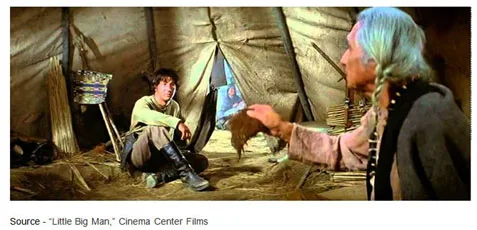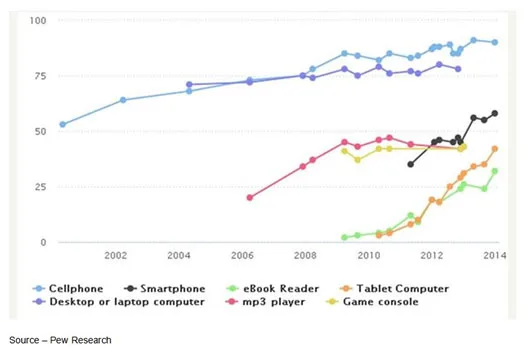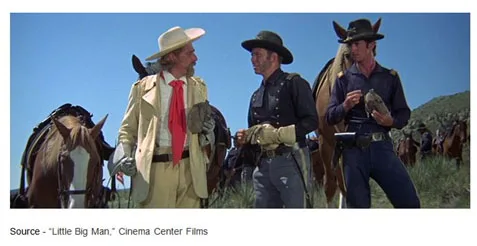Mean What You Say

Old Lodge Skin, “Little Big Man,” Cinema Center Films, 1970
Drive down 101 in Silicon Valley, or any industrial park on the planet, and you can almost see the skeletons of once thriving businesses that all had one thing in common … they were innovative.
Most were so enthralled with their innovation they couldn’t get out of their own way.
Others had bad luck, bad timing.
They often failed for two reasons:
- Great new product ideas would cannibalize existing product sales
- Getting complete organizational consensus took time … was messy … expensive
It’s difficult to develop a new product or new service that will disrupt present products that are producing great profits or will change the very core of the company. It’s called “eating your own.”
It’s not easy to change what made you successful in the past and strike out in a new direction.
It’s especially difficult for managers who have the responsibility to develop innovations that will prepare the company for tomorrow while being pressured to continuously meet short-term objectives.
Shareholders only think quarter to quarter and often view innovation R&D that “may” pay-off in a year or two as a needless risk when short-term profits are reduced.
The same opinions are also raised by internal stakeholders who are oblivious to changes taking place in the world around them.
Being prudent is easier but more dangerous when the market is so hyper volatile.
Ovum found staying the course is impossible today because change is taking place faster than ever before.
 Moving Faster – With each technological advance, people absorb them into their daily lives more quickly. The telephone and TV took 20 years to reach 50 percent usage. Today, products like smartphones and tablets feel as though they have been with us forever and there is no sign that the momentum will slow.
Moving Faster – With each technological advance, people absorb them into their daily lives more quickly. The telephone and TV took 20 years to reach 50 percent usage. Today, products like smartphones and tablets feel as though they have been with us forever and there is no sign that the momentum will slow.
They reported that the average lifespan of a company back in the 1950s was 75 years. Today, the lifespan is 15 years.
Despite the warnings, it’s too easy for an organization to become entrenched in business as usual rather than embrace the uncertainty of innovation.
Its one thing for management to give the green light to a potential but risky project, it’s quite another to take money from ultra-profitable areas and invest in the new idea.
Doing development on a shoestring or table scraps is a noble effort but the chance of someone introducing the same or similar idea first – or being leapfrogged – isn’t worth the gamble.
Hired executives and technology developers have an aversion to risky projects and ideas. Many feel too many failures just don’t look good on the resume. Being risk-averse can still be a sensible approach, but it shouldn’t be a business’s default stance.
Avoiding unproven ideas in favor of maintaining business as usual can be an even greater disaster.
Innovations usually arise from people who want to fix or change things that aren’t broken.
Once large, healthy firms like DEC, Data General and Wang weren’t willing or able to develop new desktop/portable computers that endangered their healthy minicomputer sales. Blackberry couldn’t introduce stylish portable phones that might cannibalize their “professional” phone sales.
In many instances, management claims they are listening to their customers and delivering the products/solutions they want.
Steve Jobs was famous for saying, ““People don’t know what they want until you show it to them”.
It seems counterintuitive, but it’s true.
- No one wanted a horseless carriage, just a faster horse and a more comfortable carriage
- No one wanted a mobile phone, let alone mobile email; music; video
- No one wanted SSD (solid state drives) just faster, smaller, more rugged HDs
- No one wanted social media
- No one wanted game consoles
These products/ideas, and thousands more, were what Harvard’s Clayton Christensen called disruptive innovations.
 Total Disruption – True disruptive innovations, not just new products that are marketed as being innovative, reshape the way we think about and interact with the people and world around us.
Total Disruption – True disruptive innovations, not just new products that are marketed as being innovative, reshape the way we think about and interact with the people and world around us.
Explaining the phrase, Christensen said, “For the innovations that matter, customers are not very articulate at what those things need to be”.
Even in today’s always-on, always talking environment, companies often make assumptions as to what the customer is doing and how he/she is doing it rather than searching customer comments and social media to find their pain points, their work-arounds, their real wish list.
Some customers are actually pretty smart and have the germ of an idea that can change the company’s course and future.
And even if it failed before, that’s no guarantee it will fail again because time and technology may have caught up with the idea.
Great concepts are often rejected because of past history, “We tried that once or XYZ company tried it and it failed”
We all know products that failed spectacularly five years ago only to be resurrected and succeed.
It is often said that a good failure can become the launching pad for real innovation.
Thomas Edison once said, “I have not failed. I’ve just found 10,000 ways that won’t work.”
Sometimes timing is everything.
Time changes and technology cycles rise and fall so rapidly that there is less time for a company to establish itself and capitalize on the market’s demand.
In fact, being “the industry’s first” carries a lot of risk but being a perpetual follower is riskier.
Introduced back in the 1980s, 3D printing technology focused on high-end (expensive) modeling and prototype production.
It wasn’t until early in 2010 that people began exploring innovative ways to use the technology – artificial limbs and bioregeneration, high volume limited production, mass customization and more – that the technology gained momentum.
The disruption wasn’t the technology but rather the innovative applications that changed people’s view of the unique technology.
One of the major shortcomings of most design/engineering groups and technology-based companies is that they become so enthralled in the technology that they lack the ability to explain the technology in real world terms … what it can do for the consumer (business or individual).
Innovation is more about doing things in a new, unique manner rather than the technology.
 Dried Stream – Not every idea that is put forward can or should be pursued in the hopes it will change the course of a company. But routinely dismissing ideas can and does lead to the flow of innovations drying up in a company; and when new ideas are no longer put forward, the company simply dries up and disappears.
Dried Stream – Not every idea that is put forward can or should be pursued in the hopes it will change the course of a company. But routinely dismissing ideas can and does lead to the flow of innovations drying up in a company; and when new ideas are no longer put forward, the company simply dries up and disappears.
Perhaps the biggest hurdle for innovation is the desire/challenge to gain team consensus on the value of the risks/rewards.
Often the more risky the project, the greater the potential rewards.
Face it, business isn’t a democracy. Once the decision to move forward has been made, people need to be on board and do everything possible to ensure the project’s success or … get out of the way.
Some team members can find it challenging and invigorating; others are unable to make the change and grow with the challenge.
The most difficult move for most senior executives, who by nature want to control everything, is to push decision authority as low as possible in the organization. Companies struggle to find and hire the best, smartest people possible, only to limit or manage/monitor their decisions.
The key is to define the project, objectives and parameters; then measure the results, not the process.
If the company is committed to innovation in word and deed, then punishing for failure not only isn’t fun, it isn’t an option.
Instead, fail quickly and analyze what you learned from the failure for the future. Don’t waste a thing from the experience because innovation – at its best – is an inexact science.
Some ideas/innovations are simply ahead of their time; others couldn’t stand up to close scrutiny before they were initiated.
Regardless of the reasons for the failure, doing something beats the hell out of sitting in the valley and doing nothing.
 As General Custer said, “Still trying to outsmart me, aren’t you, mule-skinner. You want me to think that you don’t want me to go down there, but the subtle truth is you really *don’t* want me to go down there!”
As General Custer said, “Still trying to outsmart me, aren’t you, mule-skinner. You want me to think that you don’t want me to go down there, but the subtle truth is you really *don’t* want me to go down there!”
# # #